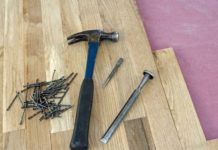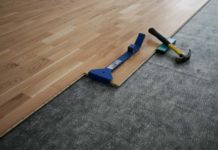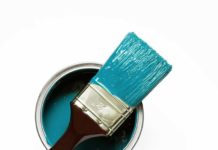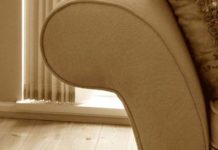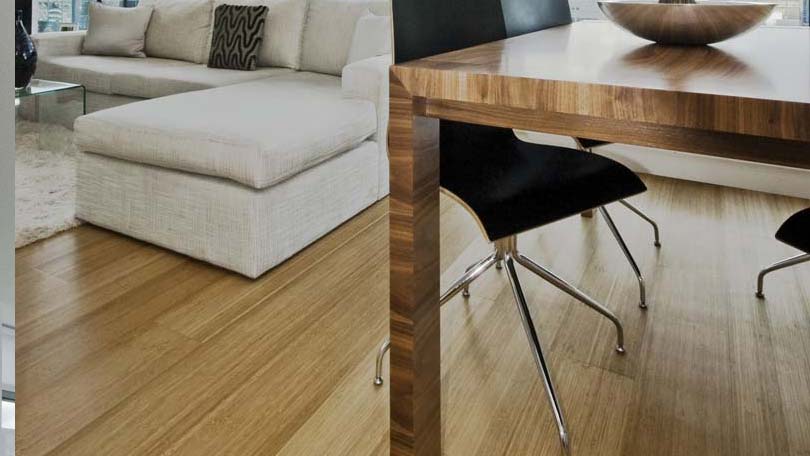
Laminate flooring is not real wood, but it is manufactured to look like and give the feel of real wood as flooring. But unlike real wood, it will not stain, fade, or dent over time. It is virtually scratch proof, which is good for parents of young kids and pet owners. It is also more water resistant than real wood
Entry level laminate flooring is good for about 15 years in an area of daily light traffic. Experts from UK Flooring Direct say that to expect anything more is wrong. Most people think that laminate will last forever. However it will suffer and need to be replaced if used in high traffic areas of the home.
Which Type to Use – Most folks look only at the finish of the flooring and don’t pay attention to the core. Cores can range from 6 mm to 12 mm. Thicker is better in this case, albeit more expensive. The thicker the core, the more stable the floor. There will be fewer if any instances of creaking sounds. A good quality core is also treated to make it more water resistant, which will eliminate the swelling that moisture can cause.
Laminate flooring can be used in bathrooms and kitchens, however it is wise to select a flooring that has wax imbedded in the joints to give even more protection against moisture. The wax guards against sudden water spills and keeps the water from penetrating to the core of the wood, eventually disrupting stability. Prior to installation, check the warranty because even some laminates are not recommended for bathroom or kitchen use.
Glueless Laminate Flooring – This type of flooring utilizes boards that are grooved to snap together. So long as the instructions are followed, it is a very easy installation. It is probably the most affordable of flooring choices. It comes in a wide variety of design and color schemes and they don’t look cheap, even if they are affordable. The laminate is durable, highly resistant to everyday living of people and pets. It is also very easy to maintain.
Drawbacks and Disadvantages – A major drawback to using laminate is that it is not a lifetime proposition. Over the long run, while it may resist dents, moisture and scratches better than real wood, it does tend to wear out faster than the real McCoy. Non-laminate flooring can last for a hundred years in kept in original condition. Laminate is impossible to repair and hard to sand or refinish. 20 years is the maximum life span for most laminate flooring.
While it is more resistant to moisture, glueless laminate flooring is vulnerable to moisture when spilled on the floor. Even if the spill is gotten up immediately, there is a danger of the spillage seeping down into the core and other under parts of the flooring causing damage. And it doesn’t add as much value to the home as wood does. Traction can also be an issue.
Caring for Laminate – The smart thing to do is to carefully read the warranty to find out how to care for your new floor. Most will tell you not to mop for 48 hours after initial installation. Never wet mop a laminate floor. That will cause water to seep at the baseboards or under the trim or between the joints in the floor, ruining the core. Vacuum or sweep the floor and then if necessary, damp mop. However, if you must use a damp mop, make absolutely sure it’s wrung almost dry.
Never apply wax or acrylic floor finishes over your laminate flooring. It is already finished. Only use stain removal products recommended by the manufacturer. Some products will ruin your finish. Put doormats on both sides of an exterior door. This will cut down on the amount of dirt carried in on the bottoms of shoes. This dirt can scratch the finish of the floor. It would be wise to put those easyglide buttons on the bottom of furniture to guard against scars and scratches, too.
Common Sense Maintenance – Keeping the laminate flooring is basically a matter of common sense and easy cleaning procedures. Guard against using heavy or sharp objects in proximity to the new floor. Use tarps or padding when working on the ceiling or in a position to drop something like paint, onto the floor. These things can obviously cause damage.
Waterproof Laminate – A laminate that is waterproof is best for homes where moisture is a problem, either through spills, or the weather. All laminate is fortified against moisture, but some goes that extra mile. Waterproof laminate has four layers- a decorative layer and three layers that support the decorative structure. One is a melamine layer. In other words a clear resin filled membrane that coats the top layer of the flooring. The core, located in the middle is fiberboard, made of a high density material designed to absorb impact. These two along with the two other layers make the flooring waterproof.
The best way to make the floor waterproof is to install a floating floor that locks tightly over the old flooring. This locking, whether it be wax or glue, keeps moisture out preventing damage.
Locking Laminate – Before buying locking laminate flooring there are some things to consider. The good news is that locking laminate is easy to install. It requires matching up the tongues and grooves to keep the boards in place. In the less expensive versions, the locking can wear out or expand and loosen over time. So, look for thicker grooves and tongues on the type of laminate that you want. Thicker is better in this case.
However, even the best locking mechanism needs a smooth and level under surface upon which to rest. If the foundation is bumpy or lumpy or uneven for whatever reason, then no locking mechanism is going to hold forever. Unevenness can cause the floor to actually break if stepped on in the wrong place at the wrong time. So remove all impediments, old carpeting, old tiling, whatever is there to make sure the sub-flooring is smooth before laying down the new laminate flooring.

